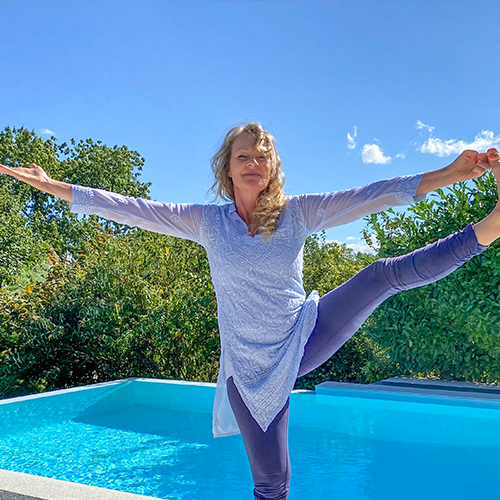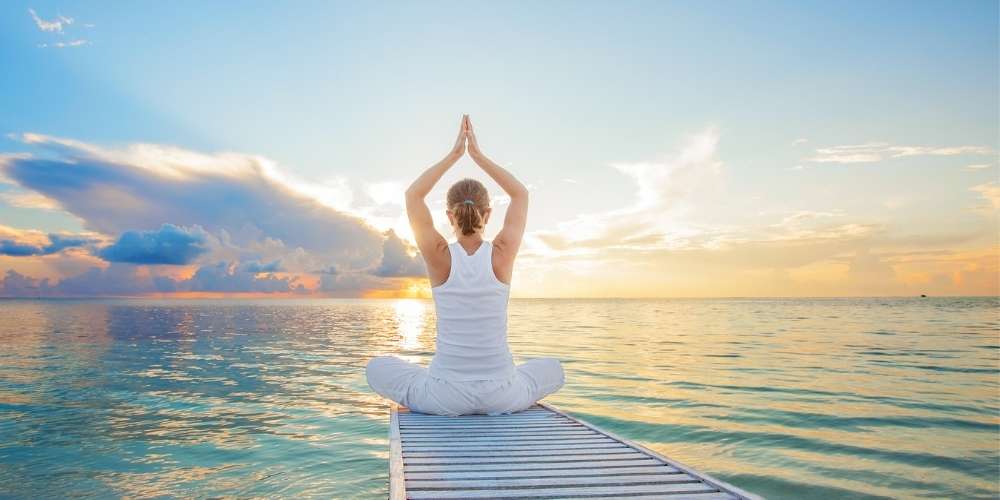Many age-related vision problems stem from a gradual loss of flexibility and tone in the eye muscles, which get locked into habitual patterns and lose their ability to focus at different distances. If you have the good fortune of excellent vision, and don’t want to lose it—or, like me, you hope to improve your fuzzy eyesight—evidence suggests that yoga may have a solution. Any student of the Sivananda lineage would recognize the core exercises taught by the late celebrated ophthalmologist William H. Bates. Bates claimed he could improve visual perception with palming, eyeball rotations, and vision shifting—the same Sivananda exercises I once treated with indifference. In this article, you will find tips for eye yoga exercises.
The late physician swami Sivananda considered sight the most abused of our five senses. The first chapter in his treatise, Yoga Asanas, describes an extensive series of eye exercises. As with any yogic practice, the purpose of these exercises isn’t just health. According to Swami Sitaramananda, director of the Sivananda Yoga Vedanta Center of San Francisco, “The fastest way to bring the mind into concentration is through the eyes.”
Though it may seem fanciful, this correlation between eyes and mind has a profound physiological basis. Vision occupies about 40 percent of the brain’s capacity; that’s why we close our eyes to relax and fall asleep. And four of our 12 cranial nerves are dedicated exclusively to vision, while two other nerves are vision-related. Contrast this with the cardiac and digestive functions, which require just one cranial nerve to control both.
While insight may be the ultimate purpose of eye asanas, vision improvement is also an important benefit. Surprisingly, it’s not the muscle stretching and contracting that seems to have the greatest effect. Relaxation appears to be the single most important element of eye health.

Eye Yoga Exercises
Eye exercises, including eye yoga, may work to help with eye strain as well as a decrease in stress. Feeling less stress can help you focus better, so while you may not be “healing” or fixing your eyesight, you may be better able to see and recognize what’s going on around you.
The best time to do yoga for the eyes is on days when you have been looking at a screen for several hours to see if they help relieve discomfort. If you wear contact lenses or glasses, you’ll want to remove them before the exercises. There’s more science to support the practice of eye yoga than you might expect. Eye yoga involves focusing on objects both close at hand and far away. It also involves moving your eyes from the left, upward, to the right, and downward. These focusing movements and muscle training serve two purposes:
First, tending to small, purposeful movements through any kind of yogic practice calms your body down. Bringing peace to your body through healthy stress coping mechanisms helps treat hypertension, which is linked to glaucoma, headache, and anxiety, all of which can make eye strain and other optical conditions aggravated.
Second, practicing focus may help improve your brain’s response to the way it interprets what you see, even if your eyes tend to send what’s called “refraction errors” that make images difficult to make out. You might not actually be seeing better, but you might be becoming more attentive to what you see.
That could be why, in one study, no improvement in eyesight could be objectively measured but participants felt like they were seeing more clearly. In another study in 2013, 60 participants noted that simple eye exercises improved response time to what the study group was seeing. In other words, eye exercises helped them to more quickly identify what they were looking at.
Yoga Eye Exercises
Some simple yoga for the eye exercises are mapped out below:
- The clock: With your eyes open, imagine your face being a clock face and look up to 12h00. Close your eyes then open again and look to 3h00. Close the eyes again and open to look to 6h00. Close your eyes again and open and look to 9h00. Close the eyes for a breath in and a breath out and start again at 12h00 and move in the opposite direction. Repeat this exercise up to three times.
- Look close, Look far: With your eyes open, look at an object about one meter away from your eyes. Study the details of the object for five seconds. Then look as far away as possible – preferably through a window and even kilometers away. Find a point in this distance and study the details that you can see for five seconds. Now bring your eyes back to the close object, studying the details. Then back to the object far away. Then close your eyes to relax them completely with deep breaths.
- Palming: With the palms of the hand, cover your eyes completely to block out all light. Breathe deeply to relax your eyes and face.
Best Ways to Keep Your Eyes Healthy
Beyond trying out eye yoga, there are many research-backed ways to keep your eyes healthy.
- Get regular eye exams. This is essential for the early detection of conditions like cataracts and glaucoma. It also gives you the opportunity to talk to your doctor about any concerns you have about your vision. After age 60, you should go to the eye doctor every year, even if you have 20/20 vision
- Protect your eyes from ultraviolet light by wearing sunglasses
- If you work at your computer or use screens often, take stock of your screen time and take 5-minute breaks every hour or so
- Drink plenty of water to keep your eyes (and the rest of you) lubricated
- Eat green leafy vegetables, such as spinach, and kale, as well as oranges and carrots
- Don’t smoke or vape and avoid cigarette smoke
AUTHOR: ANNE

Hi! I am Anne. I am a fitness and wellness coach with over 25 years of experience in the Swiss Romande area. I am a Yoga Alliance Certified Teacher for 500 hours and for Training Teachers in Continuing Education. I am passionate about helping individuals reach their highest potential and dedicated to attaining and maintaining fulfilment and happiness in every aspect of life.


